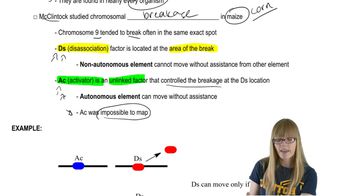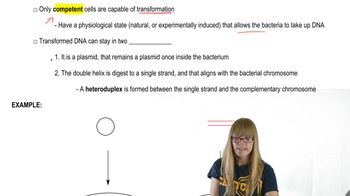Here are the essential concepts you must grasp in order to answer the question correctly.
Griffith's Experiment
Frederick Griffith's 1928 experiment with Streptococcus pneumoniae demonstrated the phenomenon of transformation, where non-virulent bacteria could acquire virulence from heat-killed virulent strains. This pivotal study suggested that some 'transforming principle' was responsible for this genetic change, laying the groundwork for future genetic research.
Recommended video:
Avery's Discovery
In 1944, Oswald Avery and his colleagues built upon Griffith's findings by identifying DNA as the 'transforming principle.' They conducted experiments that showed only DNA from virulent strains could transform non-virulent strains, providing strong evidence that DNA is the molecule responsible for heredity and genetic information.
Recommended video:
Transformation in Genetics
Transformation is a process in genetics where a cell takes up foreign DNA from its environment, leading to a change in its genotype and phenotype. This mechanism is crucial for understanding genetic variation and has significant implications in molecular biology, biotechnology, and genetic engineering.
Recommended video:



